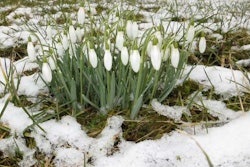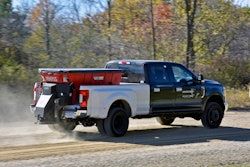
No matter where you live, it can be difficult and even down-right confusing to prepare your garden for the cold. Here are a few tips and tricks to help you sort out your preparations and hopefully find some fun in it too:
First off, if you are confused about which plants to cover and which can handle a bit of frost, here’s a great chart for you: Frost Tolerance Chart for Edibles.
Here’s a look at the three major levels of frost protection for your garden, all of which are especially effective for edibles. Note: We are big fans of not just protecting your plants but also doing it with style. That said, these methods will help ensure you can (1) protect your plants and (2) be sure your landscape continues to reflect the beauty you intended for it.
General rules of thumb
The closer plant parts are to the ground, the more they can tolerate the cold and wind chills. Though all of the methods below can help with the conditions noted in the chart, the more height and wind you have, the tougher the plants are to protect.
Although watering your front steps is a bad idea right before dusk during a frost warning, adding water to the base of your plants before a light to moderate frost can have a number of warming benefits on many of your edibles. First, moist soil can retain more heat than dry soil and can serve to activate more microbial activity, which creates additional heat of its own.
Second, when a plant has to work, it warms itself (kind of like you and me). Think of it like this: Many plants use energy to bring water up from their roots into their stems and leaves. They then expend more energy to convert it to be used by the plants. This energy warms the plants from the inside-out. Science is awesome, right? So go ahead and water your plants well when a frost is on the horizon.
If the forecast calls for a hard frost/freeze (below 28 Fahrenheit), then you will want to water earlier in the day and not at dusk. (Warning: Do not use this method for tropical herbaceous plants such as bananas; for them, moist is fine but deep-watering is a no-go. More on bananas below.)
The next level: Lighten up
Yes, nearly any lights will do, even those fun twinkle lights that often come out around Christmas time. When you hear the weather report calling for a moderate to heavy frost, grab your twinkle lights and weave them around your plants. (Not the LED variety; they don’t put off any heat. Use the cheaper, old-school incandescent lights with the filament bulbs.) The small amount of energy and heat produced by the lights is enough to keep your plants happy throughout the cold night.
For bigger trees and plants, consider placing a simple 100-watt outdoor light on the ground and point it up under the canopy to warm the entire tree. A big up-side to this method is you also are creating a great landscape lighting effect that will enhance your landscape at the same time.
Level 3: Cover up
From bed sheets to bubble-wrap, row covers to reclaimed tents and tarps, there are a number of ways you can help your favorite plants cover up this winter. Let’s make some sense of them all here:
There are fitted plant covers and cloths available at plant nurseries that work well or you can use old cotton sheets to cover up your plants. Ideally, you want to have stakes around your plants and place the sheet on those. This way, you have created a little plant tent that keeps the plants nice and toasty inside. Sometimes if the cover retains moisture and it is touching the plant’s leaves, it can freeze them instead of protecting them. If you don’t have the stakes, cover the plants directly, as it is a better layer of protection than not having anything.
Tarps work much the same-way as other fabric covers except they keep new moisture out, and existing moisture in, which can actually improve their ability to keep your plants warm – even too warm in some cases. When using tarps in frost scenarios, be sure to leave room for air circulation and, weather permitting (above freezing), uncover the plants during the day to give them a chance to stretch out and breathe.
Bananas respond best to bubble-wrap. (That’s true for most herbaceous plants.) Wrap your tender banana stalk with the bubble side in. Two layers of bubble-wrap will be enough even in snow country up to the northern parts of British Columbia. Also, if you’d like to add a bit of seasonal elegance to this method, you can even wrap up a few fronds and add some red tape for a candy cane look like I’m doing today. It’s also wise to add at least 2 inches of additional mulch (leaves are best) to the base to help protect the roots.
If things get really cold (below 17), you can use a combination of all three techniques if you need to. In addition, pile a good dry mulch of leaves or straw a bit higher around your tender plants.
If your plants still freeze, be patient. Don’t cut off the damage too quickly as that may be the only thing preventing it from freezing completely.
Give the weather time to warm up and see if some new growth starts to emerge in the spring, letting you know that the roots are still viable. This is often the case with perennials. They will need a good pruning in spring, but tend to bounce back. Annuals, on the other hand, will typically do best in the compost pile once the black and frozen line reaches the ground level.
Good luck this winter, and share the warmth!
EDITOR’S NOTE: This article was prepared by Agriscaping Technologies, an Arizona firm founded by Justin Rohner that specializes in edible landscaping.











